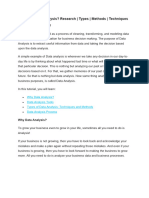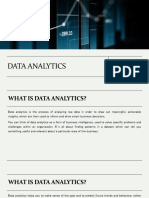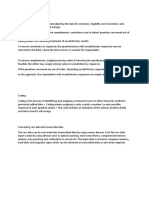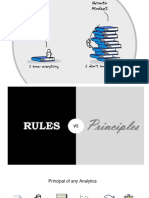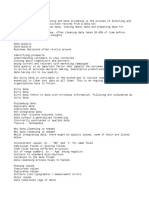0% found this document useful (0 votes)
16 views7 pages2the Data Analysis Process
The document outlines the data analysis process, which includes defining the question, collecting data, cleaning the data, analyzing it, and visualizing findings. It emphasizes the importance of each step, particularly the time-consuming data cleaning phase, and categorizes analysis into descriptive, diagnostic, predictive, and prescriptive types. Additionally, it lists nine top tools for data analysis, including Microsoft Excel, Python, and Tableau.
Uploaded by
Anant BarjatyaCopyright
© © All Rights Reserved
We take content rights seriously. If you suspect this is your content, claim it here.
Available Formats
Download as PDF, TXT or read online on Scribd
0% found this document useful (0 votes)
16 views7 pages2the Data Analysis Process
The document outlines the data analysis process, which includes defining the question, collecting data, cleaning the data, analyzing it, and visualizing findings. It emphasizes the importance of each step, particularly the time-consuming data cleaning phase, and categorizes analysis into descriptive, diagnostic, predictive, and prescriptive types. Additionally, it lists nine top tools for data analysis, including Microsoft Excel, Python, and Tableau.
Uploaded by
Anant BarjatyaCopyright
© © All Rights Reserved
We take content rights seriously. If you suspect this is your content, claim it here.
Available Formats
Download as PDF, TXT or read online on Scribd
/ 7
